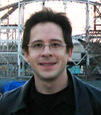When reading THE MASTER KEY SYSTEM by Charles F. Haanel (http://www.thefreemasterkey.com), a question is frequently asked: What is the difference betwixt using your imagination and daydreaming? As with most things, the difference is very subtle but it is the minute that differentiates between those who succeed and those who fail.
In Week Eight of The Master Key System, Haanel writes:
14. Do not confuse Imagination with Fancy, or that form of day dreaming in which some people like to indulge. Day dreaming is a form of mental dissipation which may lead to mental disaster.
15. Constructive imagination means mental labor, by some considered to be the hardest kind of labor. But, if so, it yields the greatest returns, for all the great things in life have come to men and women who had the capacity to think, to imagine, and to make their dreams come true.
These are the lines that I believe confuse many people. Let's look at them closely.
Haanel considers CONSTRUCTIVE imagination to be "mental labor" while he states that daydreaming is something that "people like to indulge" but is a form of "mental dissipation". CONSTRUCTIVE is the key word when trying to differentiate the two.
When you use imagination in a constructive fashion, you are using your mind - your mental faculties - to envision things as you would like them to be. While it can be pleasing, it can also be hard, difficult work. For example, let's say you are working on a project you will want to imagine in your mind the outcome that you would like. In Week Sixteen, Haanel relates an interview with Henry M. Flagler, the Standard Oil multimillionaire who
...admitted that the secret of his success was his power to see a thing in its completeness. The following conversation with the reporter shows his power of idealization, concentration, and visualization—all spiritual powers:
9. “Did you actually vision to yourself the whole thing? I mean, did you, or could you, really close your eyes and see the tracks? And the trains running? And hear the whistles blowing? Did you go as far as that?"
“Yes."
“How clearly?"
“Very clearly."
THAT, my friend, is using constructive imagination. With that in mind, it will be easy to see how constructive imagination can be confused with daydreaming.
Daydreaming is basically mental masturbation. It takes place when you do NOT think about things in a constructive fashion, rather you think of them in an "I wish" sort of way. For example, listening to music and fantasizing about being a great singer when you have no musical ability whatsoever is daydreaming - and therefore wasteful.
While that is mild, daydreaming can get worse. Worrying is the WORST form of daydreaming! When you worry, you "daydream" about things that may not ever happen, but you instill in you mind and body very real feeling of fear and anxiety. Do you see how this works? Do you see how this is NOT constructive? It is at best dissipative and at worst destructive.
Look at it this way: If a person buys life insurance, he is using his constructive imagination to foresee a possible situation that may happen in the future. Therefore, he buys a policy so that his family will be cared for in the event that the worst comes to pass. There is no worry there, just good planning.
A person who worries, on the other hand, would use his mind and time to wastefully envision EVERY horrible thing that could happen. He doesn't just take care of business and then get on with his life. No, he fritters his energy on a mere possibility.
Haanel's goal with The Master Key System is to train the brain - to inculcate in a person mental discipline that will help him to achieve high aims. Having mental focus is at the top of the list and one cannot have that focus if he wastes his most valuable resources (his mental power and his time) entertaining frivolous things.
Tony Michalski is the founder and owner of Kallisti Publishing, Inc. - "The Books You Need to Read to Succeed". (http://www.kallistipublishing.com ) Kallisti Publishing, Inc. has been publishing books since 2000 and has successfully published the entire Charles F. Haanel library, Steven "Rusty" Johnson's book Walk, Don't Run, the US National Security Commission report Road Map For National Security, and others. Tony is also the author of the Master Key Workbook.

Post new comment
Please Register or Login to post new comment.